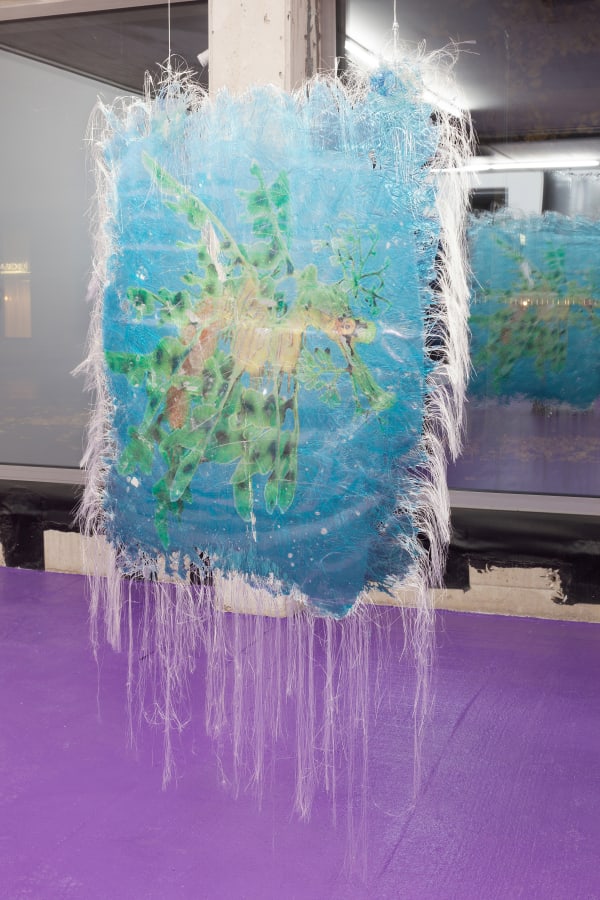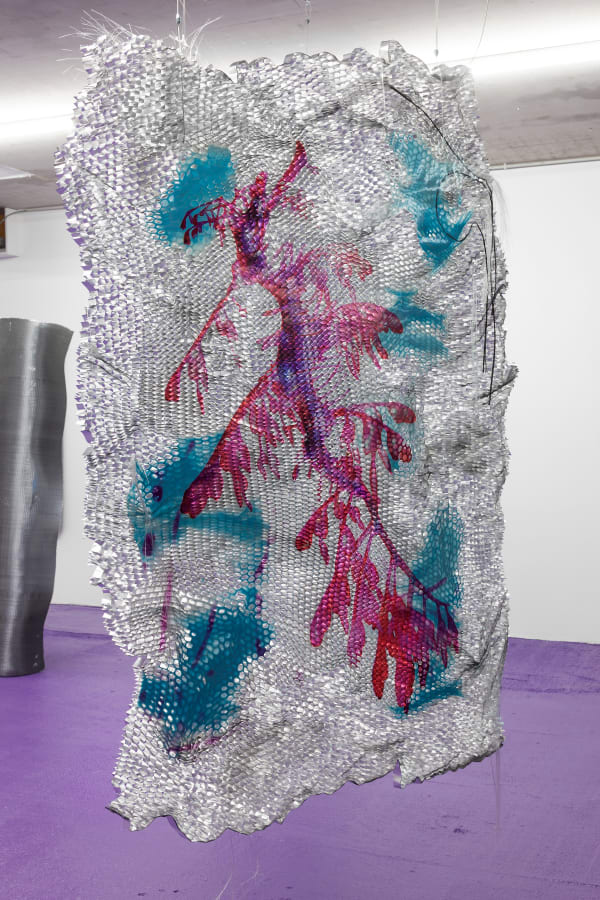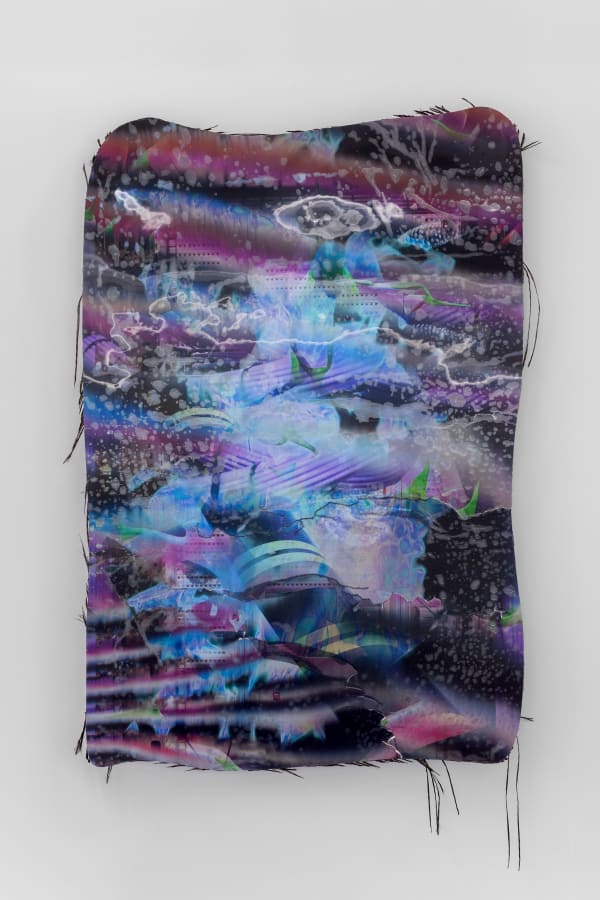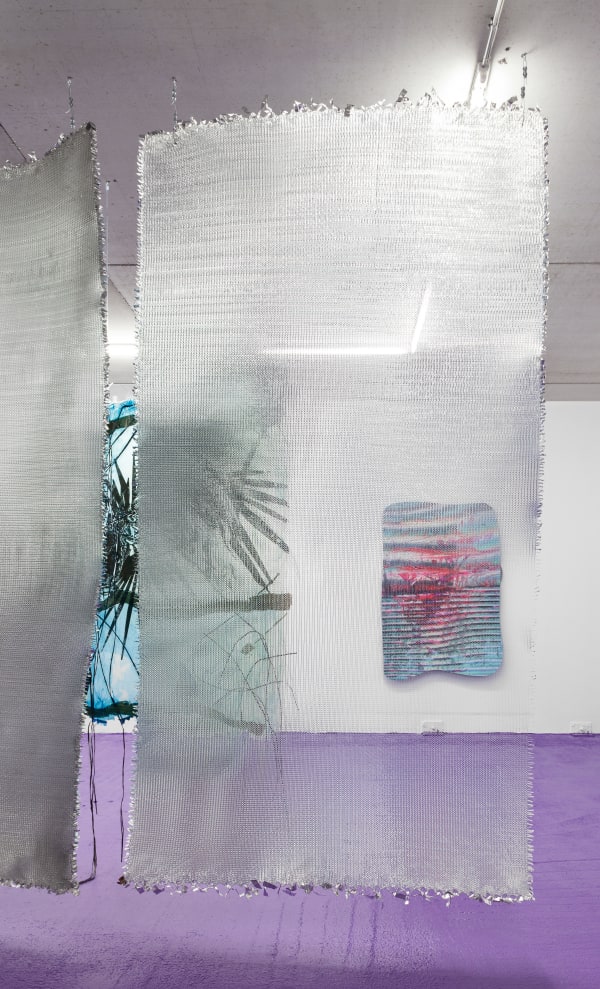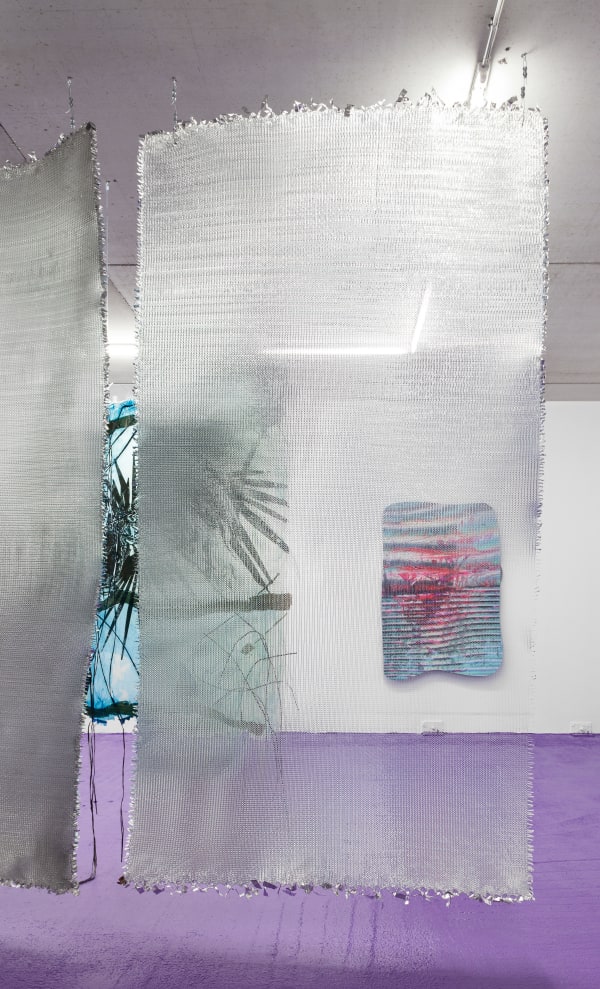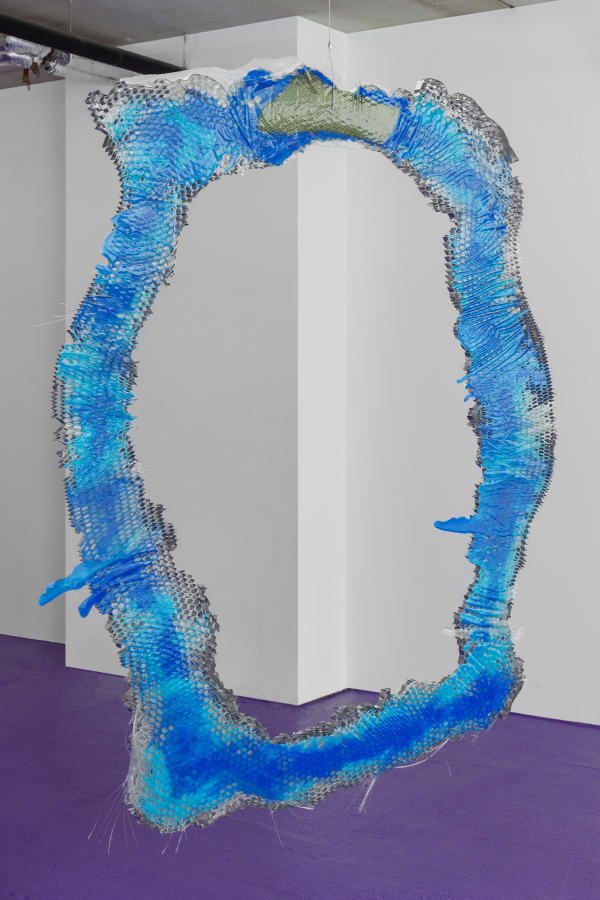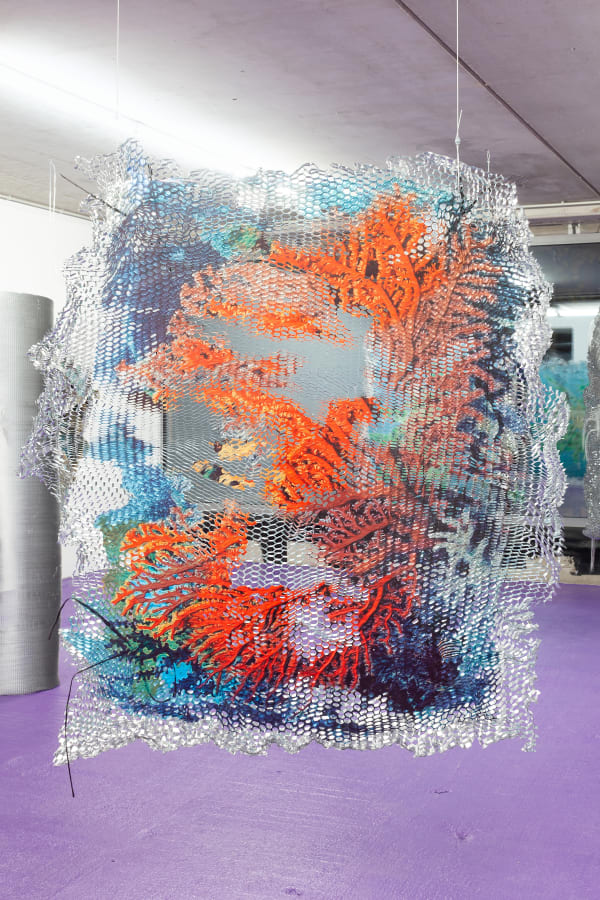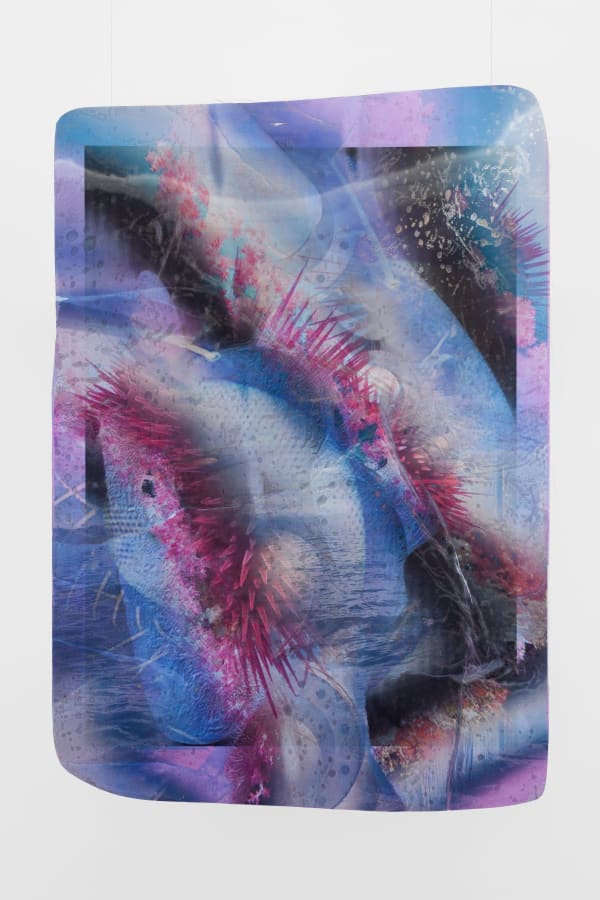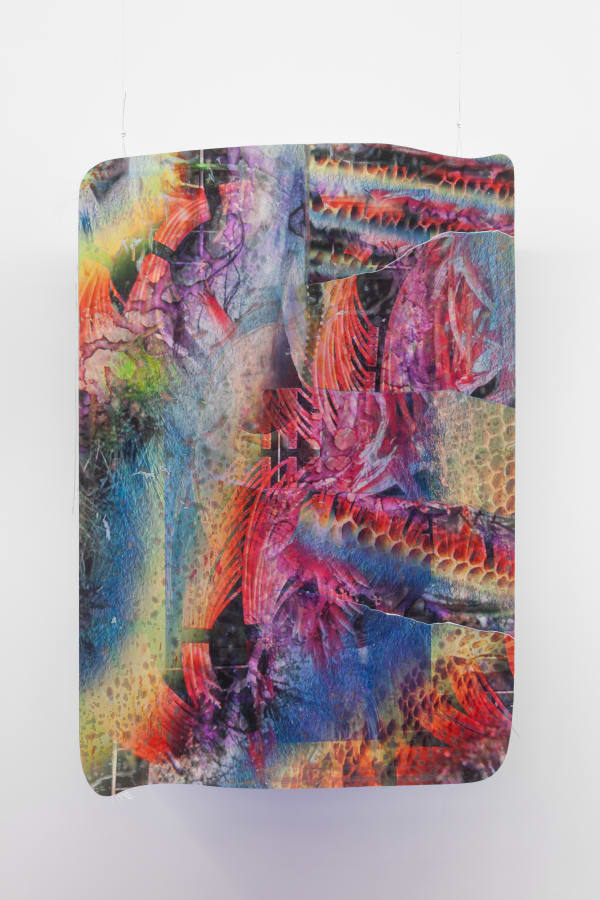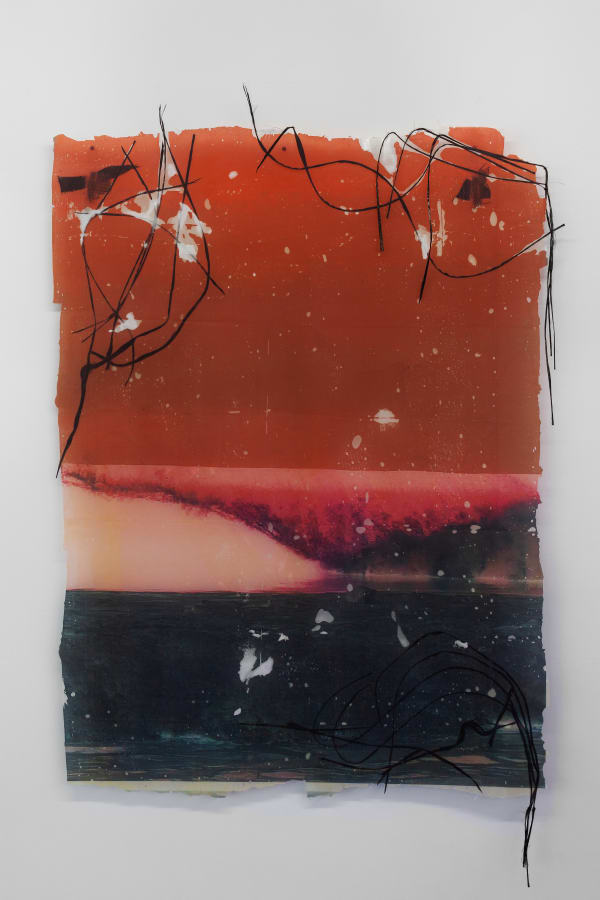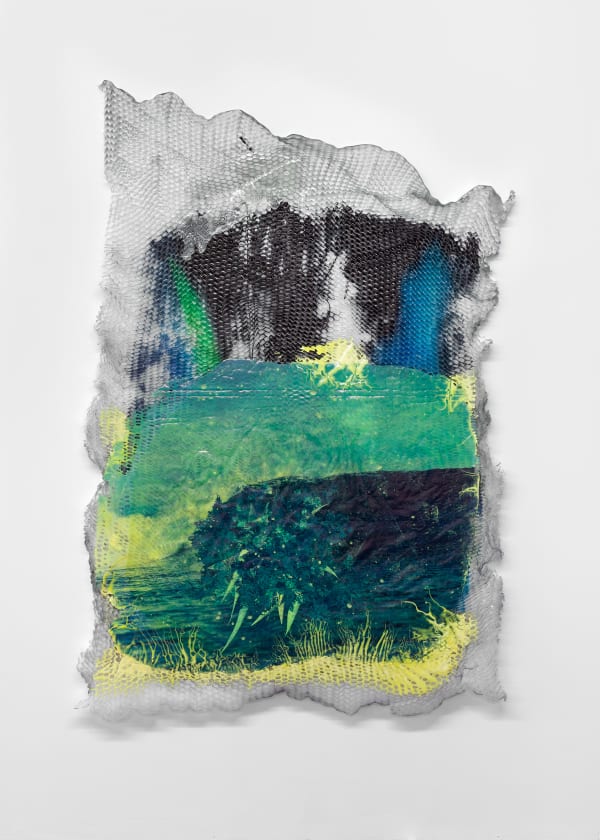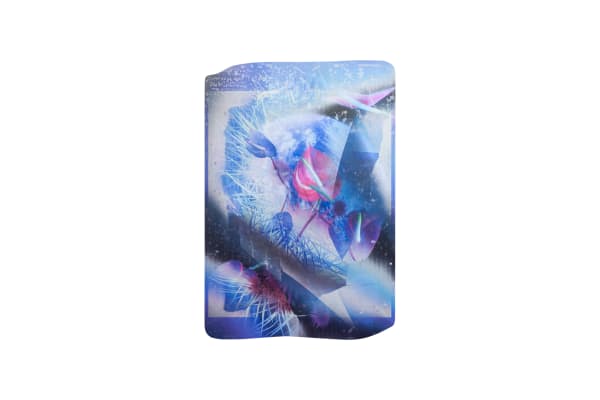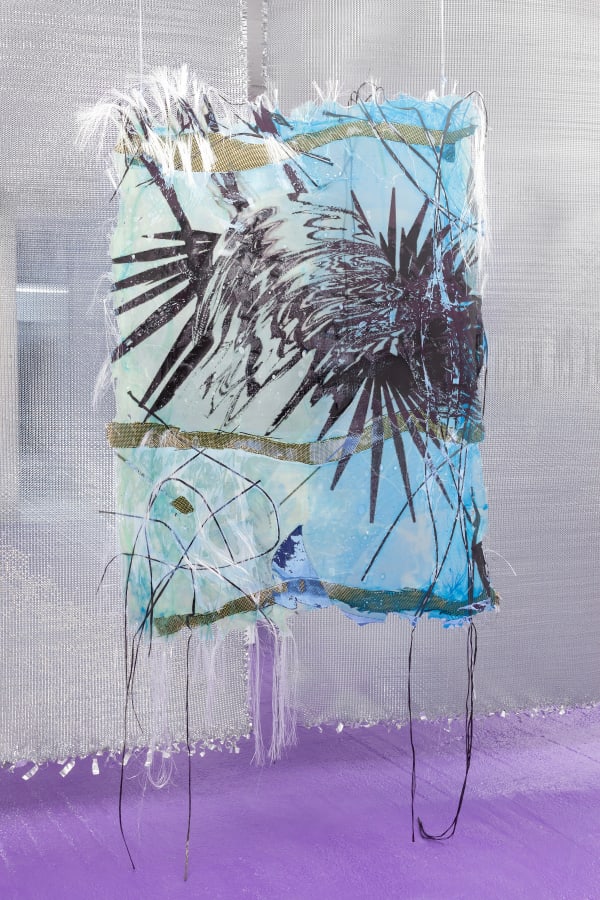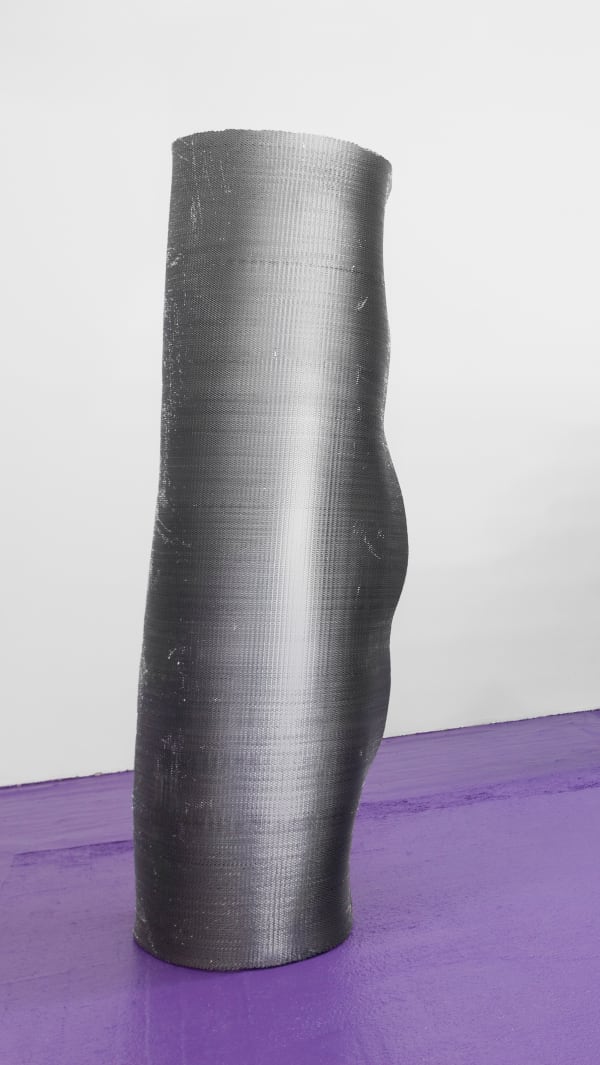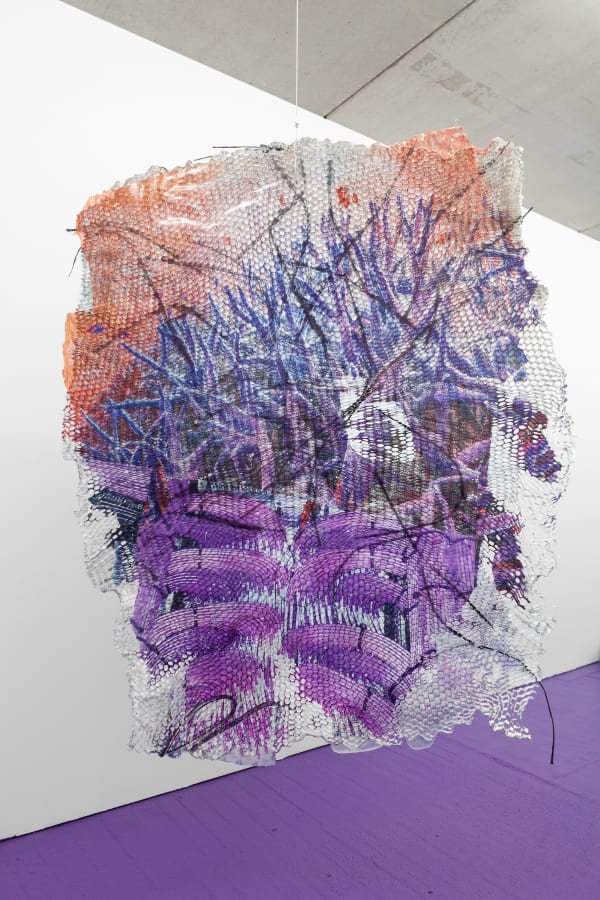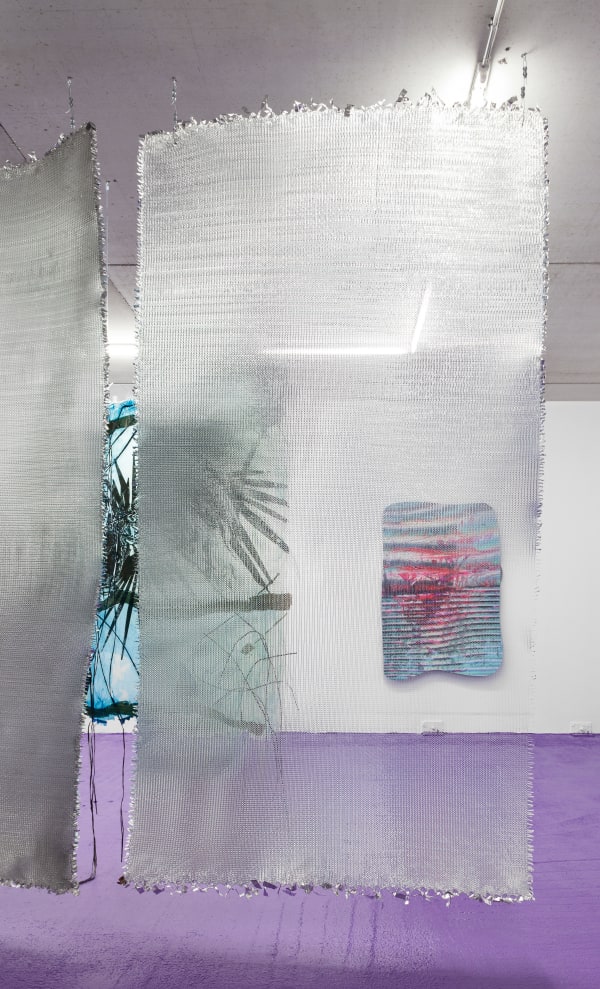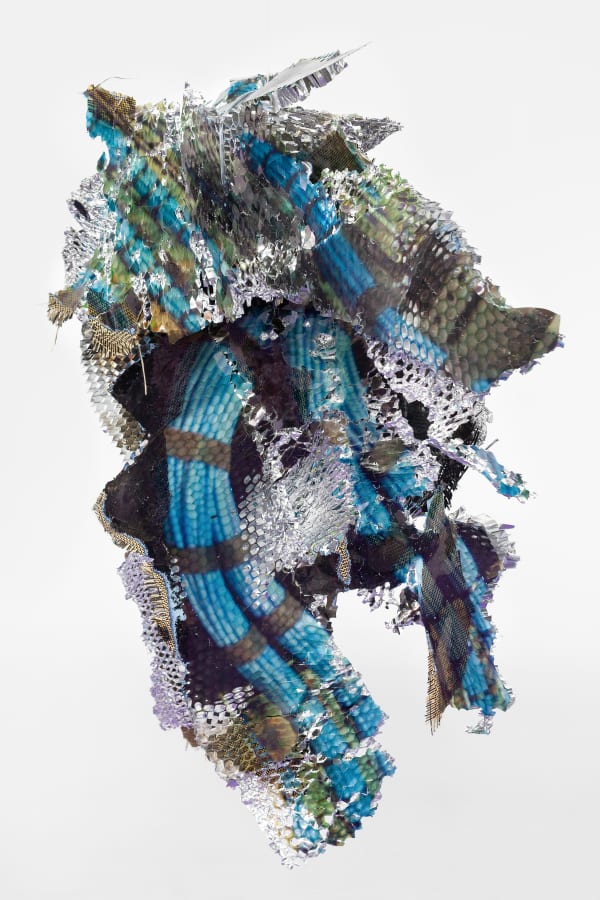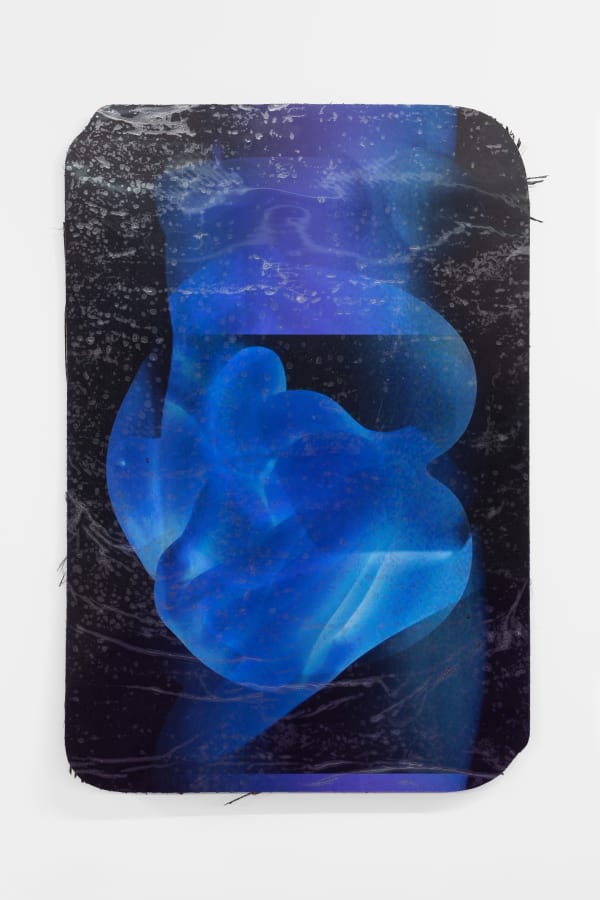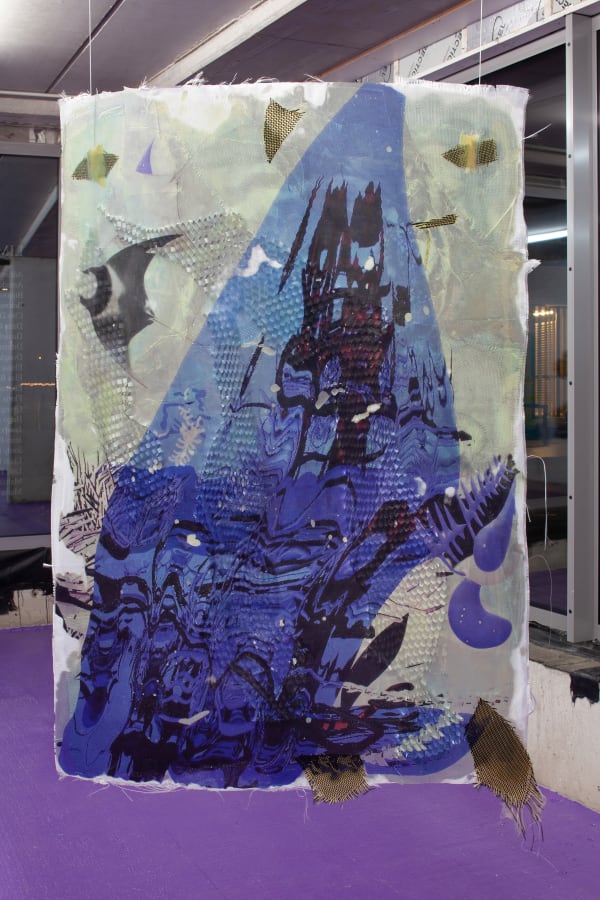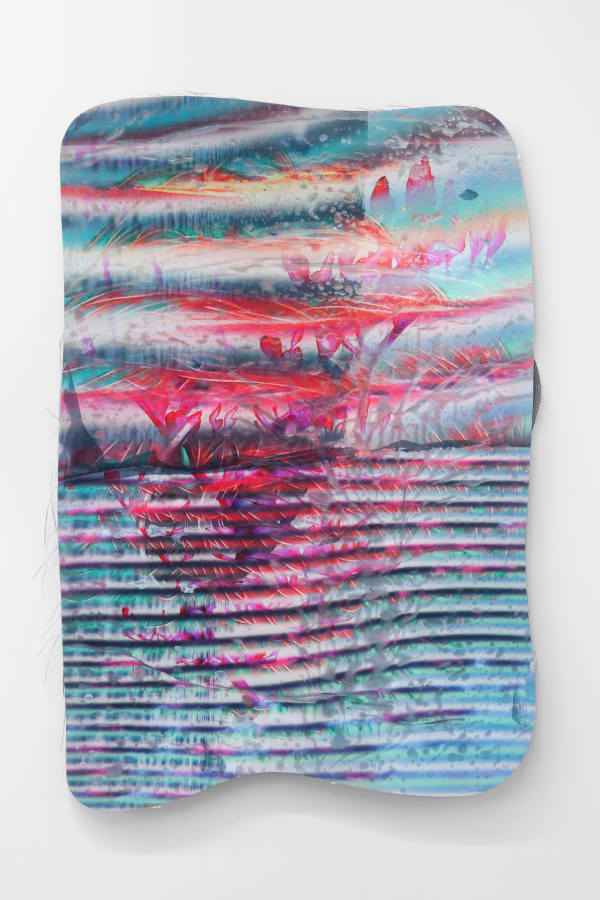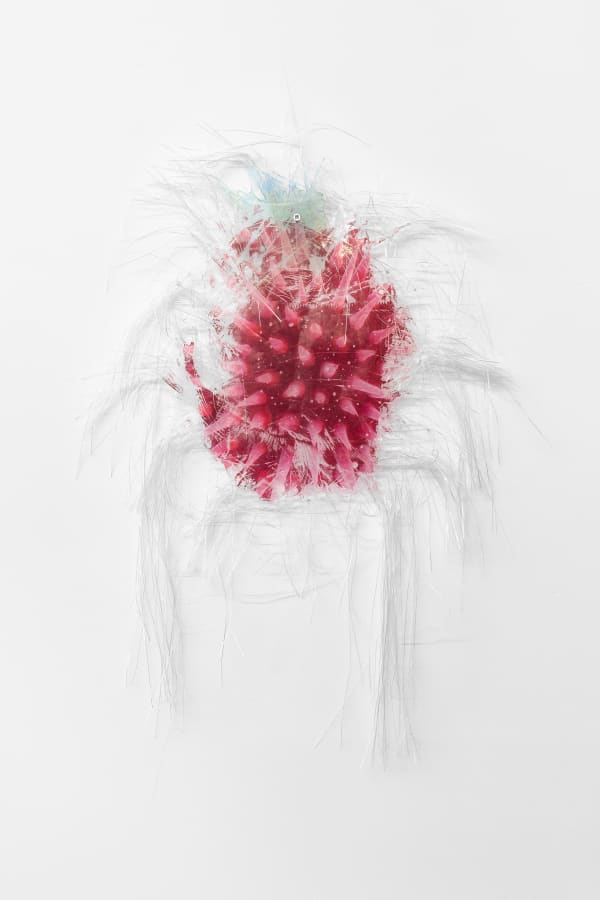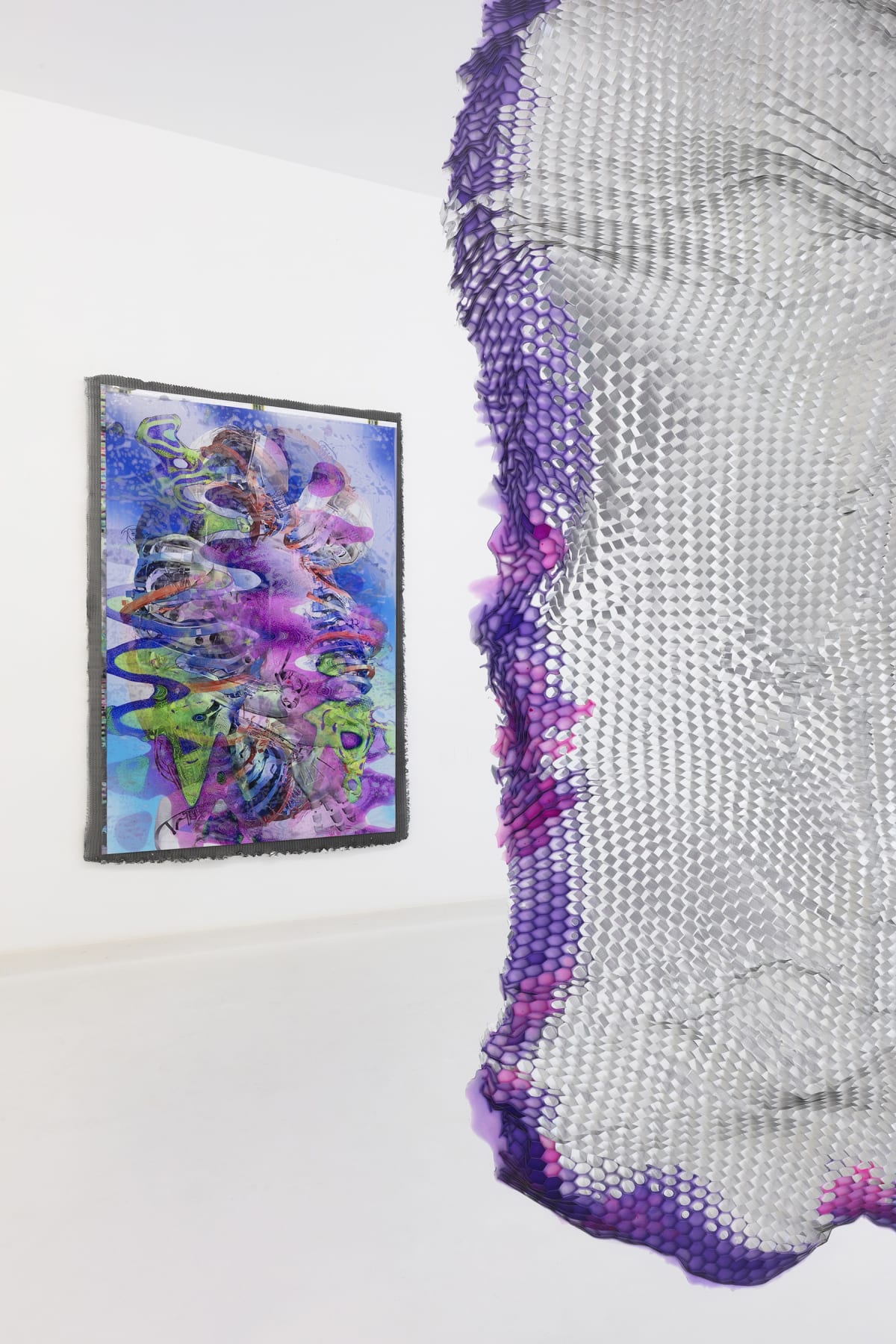Pipelines Mashups: Solo Exhibition by Estrid Lutz
“Pick a flower on Earth and you move the farthest star."
– Paul Dirac, Nobel Prize for Physics 1933
The creative relationship between artist and object could be seen as a blueprint for understanding relationships between human and non-human, and between other complex biological communities.
Lutz’s artworks invite the viewer into contemplative explorations, steps towards an enlightened sensibility to our being part of the expanding universe and the inherent ecological interdependence of it. The artworks created by Lutz for her solo exhibition at Everyday Gallery reflect their viewers, combining the natural and the technological to create a complete moving, live environment.
How can one paint a picture of our universe? Where satellite and starfish co-exist, where fiber-optic cable, veins, waves, aluminum, laughter, and the idea of transparency are all part of a whole?
For this body of work, Lutz was particularly inspired by ecotones, areas where two ecosystems meet such as a sandy beach, the structures and shapes formed on the ocean floor known as the ‘ocean relief’, how the ocean and its creatures sequester carbon, and Nicole Starosielski’s work on underwater telecommunications infrastructure, as well as the philosophy of Emanuele Coccia, who proposes a botanic-sexual view of interrelations.
At the core of her practice is the deep knowledge of interconnectedness, one that understands complex relationships: the emotional, the reliant, the destructive, and the constructive.
“One of my dreams is to up-cycle all the trash floating in space.”–Estrid Lutz
Large painterly sculptures are made using a long list of materials including water, Kevlar and carbon wire, woven glass fiber, dust, aluminum honeycomb (used to make spacecraft), lenticular sheets, air (bubbles), photoluminescent and sun-sensitive pigments.
The works are influenced by Lutz's past two years in Playa Zicatela, Puerto Escondido, Oaxaca, Mexico one of the most famous surfing beachbreaks and home to some of the world’s biggest waves. In the physical context of this beach, Lutz experimented with making artworks which became literally in touch with her environment, inspired by, taking the form of, and becoming one with the natural elements.
The imagery created by Lutz includes photographs of exotic plants, flowers, and bones she made from the offcuts of surfboard construction, as well as 3D collages and renders of sculptures made in virtual reality. Images of abyssal creatures and macroscopic nano-structures are also present, and Lutz hopes that in the future, by collaborating with scientists, she may be able to produce these images herself.
The meetings of art and nature, subject and object in Lutz’s work can be understood in the word ‘Mashup’, for which she references the computer industry jargon for combining elements from two or more sources in a single graphical interface. ‘Pipelines’ not only resonates with the most desirable curl of a wave but the underground infrastructure that provides our digital connectedness.
How can we learn to be at one with everything in a constant state of becoming, in light of these ways of seeing Lutz so generously shows us?
Text by Ché Zara Blomfield
Images by Silvia Cappellari and Seppe Elewaut


